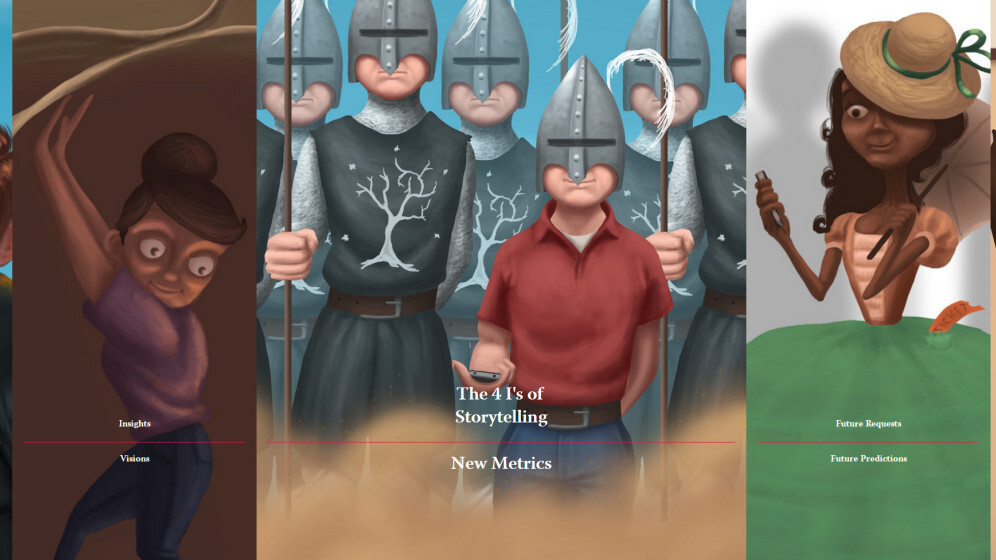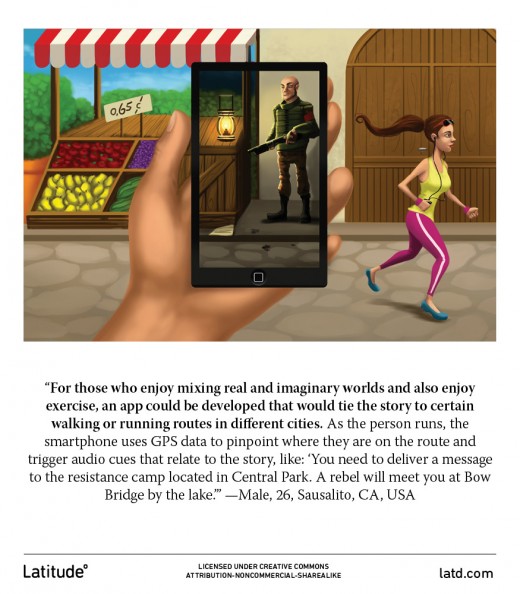
Research group Latitude has been looking at the way that the Web and digital evolution has, and will, change the way people tell stories in the future, focusing specifically on how people want technology to play a part.
The study, released this week, follows on from the first stage released in August last year, and goes into more depth to look at the way in which the use of technology is expanding the possibilities for how stories are told.
Unsurprisingly, the group is looking for ideas in which storytelling can be improved through cross-platform tie-ins and sampled participants aged 15-59, living in Brazil, the United Kingdom, and the United States. All were smartphone owners with basic cable and/or pay TV services (including streaming from the web) who watch at least six hours of TV content per week. At least 50 percent of participants from the UK and US were required to own a tablet, too.
“Technology is creating new opportunities to engage with narratives—but it’s not just about accessing more content in more places; it’s about the opportunity to bring stories out of the screen and into our lives,” Neela Sakaria, EVP of Latitude, said. “We found audiences are more ready than ever to embrace new tech-driven possibilities for stories to impact us more deeply: allowing us to see new points of view, inspiring us to live better, and even changing the ways we think about brands.”
Among the key findings from this year’s study are that 78 percent of people want to “friend” a character digitally – meaning they would receive updates via platforms like Facebook or via SMS – and would like to be able to sway the outcome of a particular decision, as they would with real friends, perhaps.
Other findings included that 87 percent of people want to be able to get more perspective on a story by seeing through a particular character’s eyes or changing the point-of-view altogether and switch to a different character.
It seems a good majority of people, well, the respondents anyway, want to see characters become more “real” and live full lives, 24 hours a day, 7 days a week even when people aren’t tuning into the story.
When significant events happen, fans might receive text messages from characters or push alerts from “official” news sources. In fact, 91% say narratives with a “real-time” story-world would motivate them to tune in more often to ensure they weren’t missing anything,” the report said.
What about that second (and third) screen?
The study also looked at people’s use of (and how they’d want to use) a second or third screen while consuming content. It found that, overall, 41 percent of people use a second screen at least once per week while watching TV. Additionally, 67 percent say that using a second screen to interact with TV content would increase their overall TV viewing. The most popular second screen activities while watching TV tended to be goal-oriented, such as earning rewards (80% interested), voting to decide a show’s outcome (79%), or making a purchase (76%).
It’s particularly good news for brands and advertisers too, as 92 percent of respondents agreed that there was a “a real opportunity for brands to make ads feel more like a story or a game that they’d naturally choose to engage with” and that 73 percent said they’d be more than happy to find out more about products or services in the real-world at the relevant point in the story.
What does it all mean?
The findings indicate that people want a more immersive story-telling experience across different devices, and one in which characters continue to live out their lives, but in a way that we can influence and keep tabs on without having to fully commit to watching or reading something when we’re short on time. Essentially, like Twitter for storytelling in the sense of getting short updates that you can choose to engage with or not. For brands and marketers, the findings must be like a dream come true.
Check out the video below for more details.
Get the TNW newsletter
Get the most important tech news in your inbox each week.






